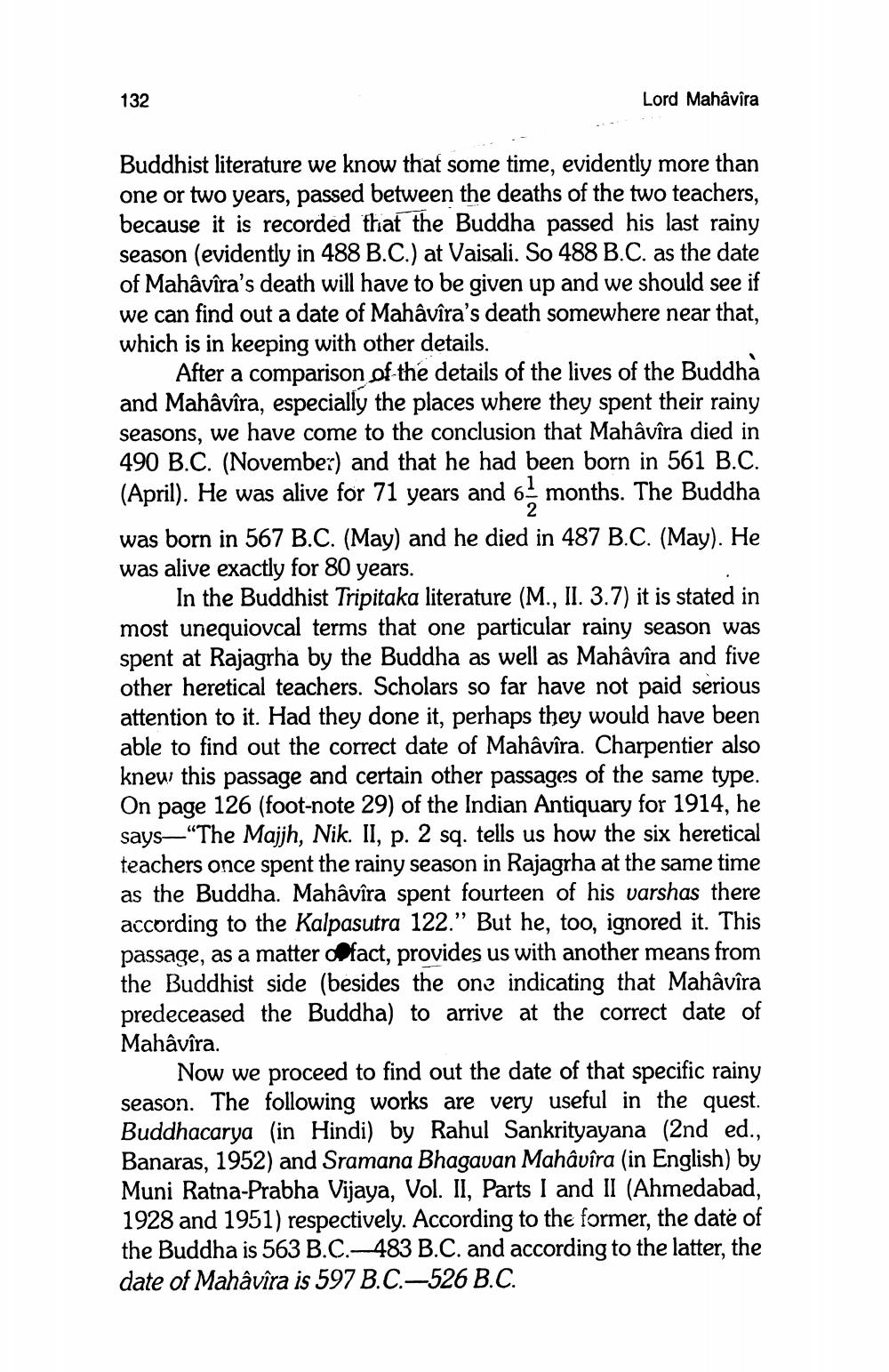________________
132
Lord Mahâvîra
Buddhist literature we know that some time, evidently more than one or two years, passed between the deaths of the two teachers, because it is recorded that the Buddha passed his last rainy season (evidently in 488 B.C.) at Vaisali. So 488 B.C. as the date of Mahâvîra's death will have to be given up and we should see if we can find out a date of Mahâvîra's death somewhere near that, which is in keeping with other details.
After a comparison of the details of the lives of the Buddha and Mahâvîra, especially the places where they spent their rainy seasons, we have come to the conclusion that Mahâvîra died in 490 B.C. (November) and that he had been born in 561 B.C. (April). He was alive for 71 years and 6 months. The Buddha was born in 567 B.C. (May) and he died in 487 B.C. (May). He was alive exactly for 80 years.
In the Buddhist Tripitaka literature (M., II. 3.7) it is stated in most unequiovcal terms that one particular rainy season was spent at Rajagrha by the Buddha as well as Mahâvîra and five other heretical teachers. Scholars so far have not paid serious attention to it. Had they done it, perhaps they would have been able to find out the correct date of Mahâvîra. Charpentier also knew this passage and certain other passages of the same type. On page 126 (foot-note 29) of the Indian Antiquary for 1914, he says— “The Majjh, Nik. II, p. 2 sq. tells us how the six heretical teachers once spent the rainy season in Rajagrha at the same time as the Buddha. Mahâvîra spent fourteen of his varshas there according to the Kalpasutra 122.” But he, too, ignored it. This passage, as a matter fact, provides us with another means from the Buddhist side (besides the one indicating that Mahâvîra predeceased the Buddha) to arrive at the correct date of Mahâvîra.
Now we proceed to find out the date of that specific rainy season. The following works are very useful in the quest. Buddhacarya (in Hindi) by Rahul Sankrityayana (2nd ed., Banaras, 1952) and Sramana Bhagavan Mahâvîra (in English) by Muni Ratna-Prabha Vijaya, Vol. II, Parts I and II (Ahmedabad, 1928 and 1951) respectively. According to the former, the date of the Buddha is 563 B.C.-483 B.C. and according to the latter, the date of Mahâvîra is 597 B.C.-526 B.C.




